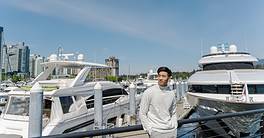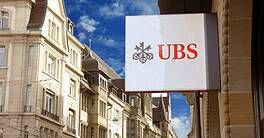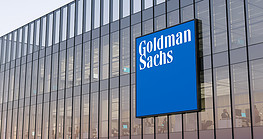The safest emerging markets banks exhibit a measure of stability that keeps them buoyant despite global recession concerns.

Recession fears are triggering market volatility in economies all over the world, but emerging markets and their banking sectors are especially vulnerable. Start with the damage from a prolonged US-China tariff war; top it with declining manufacturing output, due to lower demand projections; then fold in the threat to global supply networks inherent in a disruption of trade.
Volatile commodities markets, particularly in the energy sector, also contribute to slower growth for commodity-dependent emerging markets. Oil prices have generally slid since April this year, notwithstanding the price spike in September following the attack on the Saudi Aramco facility. The attack temporarily knocked out 50% of Saudi Arabia’s output and 5% of production globally, illustrating the vulnerabilities of production infrastructure.
Against this precarious backdrop, central banks in emerging economies are taking accommodative monetary policy stances, especially where the inflation outlook is benign. Still, banks must address profitability pressures from declining loan origination, and the potential for rising nonperforming assets. Since a high proportion of loans to borrowers in emerging markets are US dollar-denominated, a rising dollar could further strain borrowers, negatively impacting bank asset quality.
While this difficult operating environment makes profitability a challenge, emerging markets still present intriguing opportunities for expansion. Since many of these economies are underbanked, institutions can build business by attracting new retail customers. By implementing fintech solutions or by establishing virtual banks, lenders can leverage the expansion of mobile devices for online banking, while cashless payments applications can reach large, underserved populations.
Despite the risks and uncertainties, our ranking of the 50 Safest Emerging Markets Banks once again finds numerous institutions well-positioned to address the challenges and exploit the opportunities. Many are locally based, although foreign institutions can often find success through local subsidiaries or by extending credit to local banks. Banks that take one of these approaches and earned a spot in our rankings include: Banco Santander-Chile (parent: Banco Santander), Komercni banka (Societe Generale), Scotiabank Chile (Bank of Nova Scotia), Hang Seng Bank China (HSBC Group) and ING Bank Slaski (ING Groep).
The top nine banks in our 2019 rankings maintained their spots from last year, while others received a boost from positive ratings actions. South Korea’s Kookmin Bank, for example, rose two spots thanks to a Moody’s upgrade based on the bank’s strong capitalization and improved loan underwriting.
There was considerable movement in the lower levels of the rankings. Recognizing an improved operating environment in the Czech Republic as well as sound credit fundamentals, Komercni banka was upgraded by Fitch and Moody’s, which boosted it 14 spots to 24th place. Scotiabank Chile is a new entrant this year as Fitch initiated coverage, giving it the two agency ratings needed for eligibility under our methodology. International Bank of Qatar was dropped from the rankings following its merger with Barwa Bank. Ceska sporitelna, now 100% owned by parent Erste Group, was no longer eligible for inclusion.
It is troubling, however, that the bulk of the banks that dominate the ranking, especially the upper reaches—43 out of the top 50—are located either in more-developed economies like South Korea and Taiwan; in China, the biggest of the emerging markets; or in the largest Middle East oil-producing nations. None are located in Africa and few are in Latin America, regions that account for much of the population of the emerging world. There also aren’t any ranking banks from India or Indonesia, two of emerging Asia’s largest economies. The lack of local access to safer banks is a handicap for these countries—although for banks seeking to build business, it represents an opportunity.
WORLD’S SAFEST BANKS 2019 — 50 Safest Emerging Market Banks |
|---|
Rank | Company Name | Country | Fitch | Moody’s | S&P | Total Score | Assets ($ Mil.) | Statement Date |
1 | Korea Development Bank | South Korea | AA— | Aa2 | AA | 23 | 231,942 | 31-Dec-2018 |
2 | The Export-Import Bank of Korea | South Korea | AA— | Aa2 | AA | 23 | 80,591 | 31-Dec-2018 |
3 | Industrial Bank of Korea | South Korea | AA— | Aa2 | AA— | 22 | 258,191 | 31-Dec-2018 |
4 | First Abu Dhabi Bank | UAE | AA— | Aa3 | AA— | 21 | 202,585 | 31-Dec-2018 |
5 | National Bank of Kuwait | Kuwait | AA— | Aa3 | A+ | 20 | 90,327 | 31-Dec-2018 |
6 | Bank of Taiwan | Taiwan | NR | Aa3 | A+ | 18.5 | 164,171 | 31-Dec-2018 |
7 | China Development Bank | China | A+ | A1 | A+ | 18 | 2,360,984 | 31-Dec-2018 |
8 | Agricultural Development Bank of China | China | A+ | A1 | A+ | 18 | 996,451 | 31-Dec-2018 |
9 | Export-Import Bank of China | China | A+ | A1 | A+ | 18 | 609,840 | 31-Dec-2018 |
10 | Kookimin Bank | South Korea | A | Aa3 | A+ | 18 | 318,344 | 31-Dec-2018 |
11 | Shinhan Bank | South Korea | A | Aa3 | A+ | 18 | 310,821 | 31-Dec-2018 |
12 | Qatar National Bank | Qatar | A+ | Aa3 | A | 17 | 236,786 | 31-Dec-2018 |
13 | Abu Dhabi Commercial Bank | UAE | A+ | A1 | A | 17 | 76,183 | 31-Dec-2018 |
14 | Kuwait Finance House | Kuwait | A+ | A1 | NR | 17 | 58,522 | 31-Dec-2018 |
15 | Banco del Estado de Chile | Chile | NR | A1 | A+ | 17 | 57,811 | 31-Dec-2018 |
16 | Al Hilal Bank | UAE | A+ | A1 | NR | 17 | 11,884 | 31-Dec-2018 |
17 | Industrial & Commercial Bank of China | China | A | A1 | A | 17 | 4,041,958 | 31-Dec-2018 |
18 | China Construction Bank | China | A | A1 | A | 16 | 3,388,690 | 31-Dec-2018 |
19 | Agricultural Bank of China | China | A | A1 | A | 16 | 3,299,208 | 31-Dec-2018 |
20 | Bank of China | China | A | A1 | A | 16 | 3,103,353 | 31-Dec-2018 |
21 | KEB Hana Bank | South Korea | A— | A1 | A+ | 16 | 303,445 | 31-Dec-2018 |
22 | NongHyup Bank | South Korea | A— | A1 | A+ | 16 | 252,609 | 31-Dec-2018 |
23 | Banco Santander Chile | Chile | A | A1 | A | 16 | 56,480 | 31-Dec-2018 |
24 | Komercni Banka | Czech Republic | A | A1 | A | 16 | 47,096 | 31-Dec-2018 |
25 | Mega International Commercial Bank | Taiwan | NR | A1 | A | 15.5 | 104,030 | 31-Dec-2018 |
26 | Land Bank of Taiwan | Taiwan | NR | Aa3 | A— | 15.5 | 97,766 | 31-Dec-2018 |
27 | Banco de Chile | Chile | NR | A1 | A | 15.5 | 51,767 | 31-Dec-2018 |
28 | Scotiabank Chile | Chile | A+ | NR | A | 15.5 | 43,219 | 31-Dec-2018 |
29 | Abu Dhabi Islamic Bank | UAE | A+ | A2 | NR | 15.5 | 34,090 | 31-Dec-2018 |
30 | Al Ahli Bank of Kuwait | Kuwait | A+ | A2 | NR | 15.5 | 14,984 | 31-Dec-2018 |
31 | Ahli United Bank | Kuwait | A+ | A2 | NR | 15.5 | 12,893 | 31-Dec-2018 |
32 | Hang Seng Bank (China) | China | NR | A2 | A+ | 15.5 | 12,833 | 31-Dec-2018 |
33 | Woori Bank | South Korea | A— | A1 | A | 15 | 303,618 | 31-Dec-2018 |
34 | CTBC Bank | Taiwan | A | A2 | A | 15 | 187,189 | 31-Dec-2018 |
35 | Banco de Credito e Inversiones | Chile | A | A2 | A | 15 | 59,582 | 31-Dec-2018 |
36 | Qatar Islamic Bank | Qatar | A | A3 | A— | 15 | 42,082 | 31-Dec-2018 |
37 | Bank of Communications | China | A | A2 | A— | 14 | 1,390,803 | 31-Dec-2018 |
38 | Emirates NBD | UAE | A+ | A3 | NR | 14 | 136,216 | 31-Dec-2018 |
39 | SABB | Saudi Arabia | A— | A1 | NR | 14 | 46,534 | 31-Dec-2018 |
40 | ING Bank Slaski | Poland | A | A2 | NR | 14 | 37,707 | 31-Dec-2018 |
41 | Suhyup Bank | South Korea | NR | A2 | A— | 14 | 33,417 | 31-Dec-2018 |
42 | Gulf Bank | Kuwait | A+ | A3 | NR | 14 | 19,820 | 31-Dec-2018 |
43 | Commercial Bank of Kuwait | Kuwait | A+ | A3 | NR | 14 | 14,718 | 31-Dec-2018 |
44 | Boubyan Bank | Kuwait | A+ | A3 | NR | 14 | 14,313 | 31-Dec-2018 |
45 | Qatar International Islamic Bank | Qatar | A | A2 | NR | 14 | 13,808 | 31-Dec-2018 |
46 | Barwa Bank | Qatar | A | A2 | NR | 14 | 12,187 | 31-Dec-2018 |
47 | Ahli Bank | Qatar | A | A2 | NR | 14 | 11,100 | 31-Dec-2018 |
48 | National Commercial Bank | Saudi Arabia | A— | A1 | BBB+ | 13 | 120,904 | 31-Dec-2018 |
49 | Al Rajhi Bank | Saudi Arabia | A— | A1 | BBB+ | 13 | 97,334 | 31-Dec-2018 |
50 | Samba Financial Group | Saudi Arabia | A— | A1 | BBB+ | 13 | 61,317 | 31-Dec-2018 |
Asset figures from Fitch, Moody’s, and company reports. Ratings valid as of Aug. 31, 2019.



